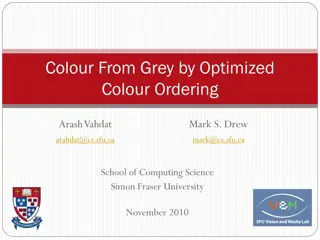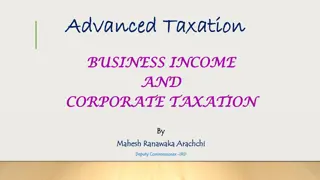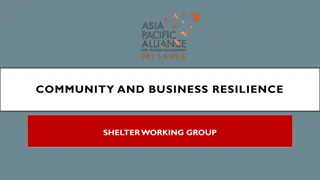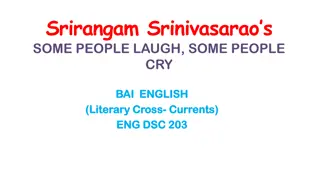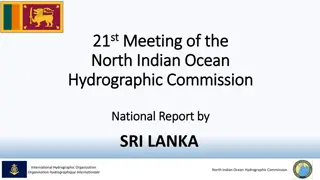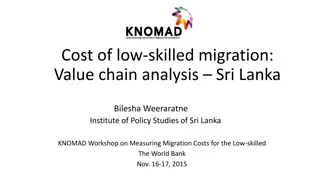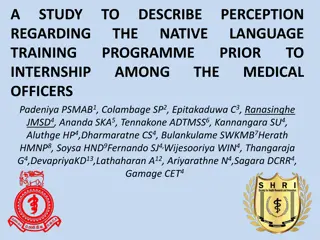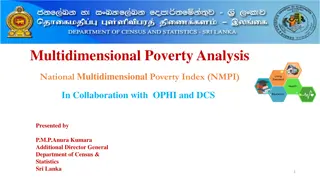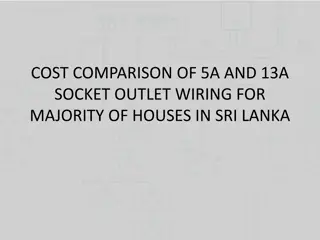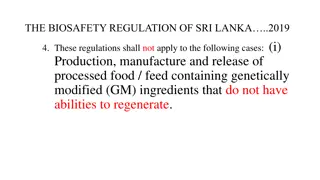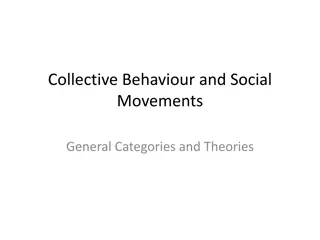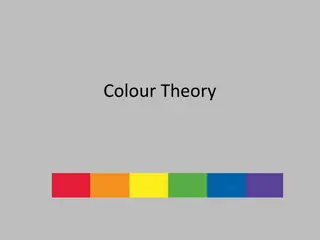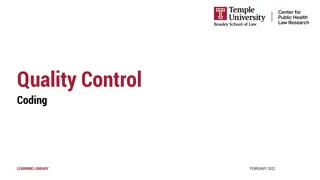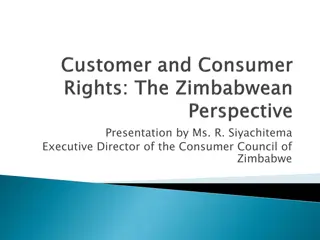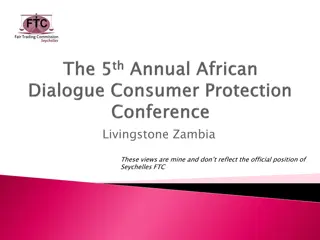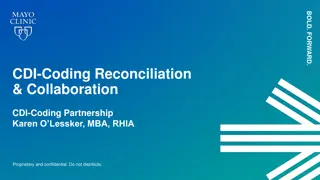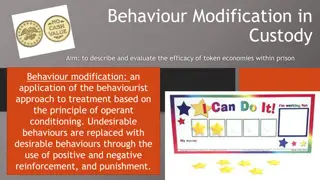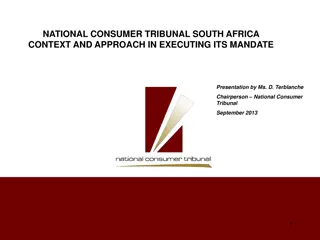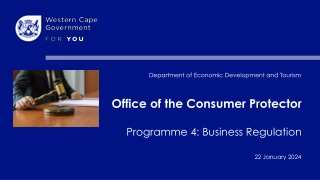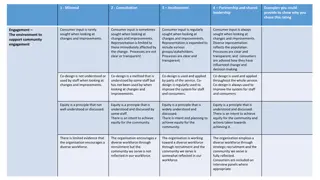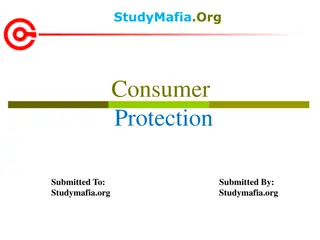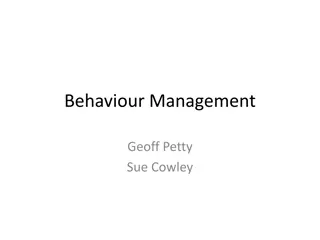Challenges in Consumer Behaviour Change and Colour Coding for Beverages in Sri Lanka
Sri Lanka faces challenges in consumer behavior change, particularly in regulating beverages through a color coding system to control non-communicable diseases (NCDs). The country's open economy has led to an increase in fast food consumption, contributing to the rising trend of NCDs. With a high percentage of the population affected by diabetes, obesity, and other NCDs, there is a pressing need for effective regulations and interventions to promote healthier choices among consumers.
Download Presentation

Please find below an Image/Link to download the presentation.
The content on the website is provided AS IS for your information and personal use only. It may not be sold, licensed, or shared on other websites without obtaining consent from the author. Download presentation by click this link. If you encounter any issues during the download, it is possible that the publisher has removed the file from their server.
E N D
Presentation Transcript
Challenges in Consumer Behaviour Challenges in Consumer Behaviour Change based on Change based on Colour Coding System for Colour Coding System for Beverages as a NCD Control Beverages as a NCD Control Mechanism in Sri Lanka Mechanism in Sri Lanka Sujeewa Gunaratne. PhD President Institute of Food Science & Technology Sri Lanka
Discussion Points Discussion Points Introduction of country Background to colour coding regulations for beverages Objectives of study Method and results Findings Recommendations
Introduction of Country Introduction of Country A small beautiful island in Indian ocean Capital: Colombo Area: Apprx 62 700 sq km Population: 21.4 Mn (2017) Population density: 342 persons per sq km (2017) GDP: 87.2 Bn USD (2017) GDP per capita: 4065 USD (2017) Literacy rate: 95.7% Life expectancy at birth: males 72, females 78.6 (2013, 2011) Free health care system: with 631 state hospitals (2015) With 80 581 hospital beds (2015) Source: Central Bank Annual Report, Annual Health Bulletin
Background to colour coding regulation for beverages Background to colour coding regulation for beverages Sri Lanka has enjoyed open economy for 40 years (since 1977) A transition of socio economic conditions A vast amount of fast food, convenient food available in market burger and chips Consumption of take away convenient foods for dinner has become a trend among urban families pizza Breads & buns Increasing affordability among upper and middle classes Kottu snacks More and more convenient food stores coming up! cakes CSD No restriction at the moment on advertising and promotion
Background to colour coding regulation for beverages Background to colour coding regulation for beverages An increasing tendency of non-communicable diseases (NCDs) In 2014, 75% of all annual deaths due to NCDs NCDs (CVD, diabetes, cancers, respiratory diseases) 20% of population is either diabetic or pre-diabetic 18.6 % diabetic in Western province (includes Colombo) [2011 National Study] 25.2% population overweight 9.2% obese 26.2% centrally obese Source: National Multi-sectoral Action Plan, Katulanda et al
Diabetes Map of Sri Lanka 18.6% Western Province Population diabetic Source: Katulanda et al, 2011
Background to colour coding regulation for beverages Background to colour coding regulation for beverages Ministry of Health National Multi-Sectoral Action Plan proposes to achieve several health goals 25% relative reduction in premature mortality from CVD, cancer, diabetes, or chronic respiratory diseases
Background to colour coding regulation for beverages Background to colour coding regulation for beverages A colour coding regulation for sugar implemented for beverages from 1st Aug 2016 Types of beverages covered Carbonated beverages RTS other than milk based products Fruit nectars Fruit juices
Objectives of the Study Objectives of the Study Understand the level of awareness of colour coding system for beverages in the population To study the ability of colour coding system on beverages to create behaviour changes in the population
Method & Results Method & Results A convenience sampling method adopted Questionnaire on colour coding system distributed among population in Western Province (Colombo, Kalutara, Gampaha districts) Western is the most populated district, including the capital A few respondents from adjoining districts Questionnaire distributed by e mail, use of snow balling method, and manual completion 125 questionnaires issued, 71 responses received
Method & Results Method & Results 1. The districts of respondents residence was as follows Respondent district % Colombo 48 Gampaha 31 Kalutara 17 Ratnapura 04 2. Age breakdown of respondents Age of respondent Number % < 20 yr 10 14 20-30 yr 28 39 31-40 yr 21 30 > 40 yr 12 17 1 5
Method & Results Method & Results 3. Awareness of colour coding regulation for beverages Awareness % Age of respondent % not aware Yes 68 < 20 yr 50 No 32 20-30 yr 48 31-40 yr 08 > 40 yr 20 4. Awareness of different beverage types covered by the regulation Awareness of types % Yes 0 No 100 1 6
Method & Results Method & Results 5. Method of knowing the regulation Awareness method % Newspapers & TV 40 Gazette notifications 0 Label display on beverages 80 Any other means * 30 6. Knowledge of colour code with highest sugar level Knowledge on highest sugar level % Identified Red code 98 did not identify Red code 02 1 7
Method & Results Method & Results 7. Is purchase and consumption based on colour code on beverages? Age of respondent % not considering colour code Consider colour code? < 20 yr 22 Yes 76 % 20-30 yr 31 No 24 % 31-40 yr 35 > 40 yr 07 8. Reduced consuming any beverages since this colour code regulation? Consumption reduction? % Yes 54 No 46 1 8
Method & Results Method & Results 9. Will colour coding system be helpful to the population to maintain health? Is colour coding system helpful % Yes 85 No 15 10. Do you wish other food products to have colour coding? Colour coding for other food? % Yes 100 No 0 1 9
Method & Results Method & Results In Depth Interviews Interview with respondent who didn t show behaviour change said that a healthy diet is based on overall balanced food intake, not just controlling sugar intake, hence not willing to change beverages taken purely on impulse Interview with respondent who changed behaviour said colour code helps to know which drink has more sugar, and when purchasing a drink, a choice can be made to select one with less sugar 2 0
Findings Findings Were consumers aware of colour coding system for beverages? Yes Was the colour coding system able to create behaviour changes in population? ` Not at satisfactory level research on behaviour change and healthy foods (Chance et al 2014) explains that long term goals/ preferences are thwarted by immediate desires 2 1
Immediate desires Long term goals and preferences Prefer Behave Control Impulse Take time to decide/ act Impulse Act without thinking Eat unhealthy Behaviour change interventions Eat healthy 2 2
Recommendations Recommendations More grass root level activities such as community training programs, school curriculum changes, behaviour change activity programs needed to generate behaviour changes in sugar reduction 2 3
References References 1. National multi-sectoral action plan for the prevention and control of non communicable diseases 2016 -2020 2. Annual Health Bulletin of Sri Lanka (2015) published in 2017 3. Katulanda et al, 2011. Province and ethnic specific prevalence of diabetes among Sri Lankan adults, Sri Lanka Journal of Diabetes Endocrinology and Metabolism 4. Chance et al, 2014. Why choosing healthy food is hard, and how to help: presenting the 4Ps framework for behaviour change, Cust. Need. and Solut 1: 253-262 5. Food (colour coding for sugar levels) regulations 2016 6. Central Bank Annual Report Key Indictors 2017 2 4



